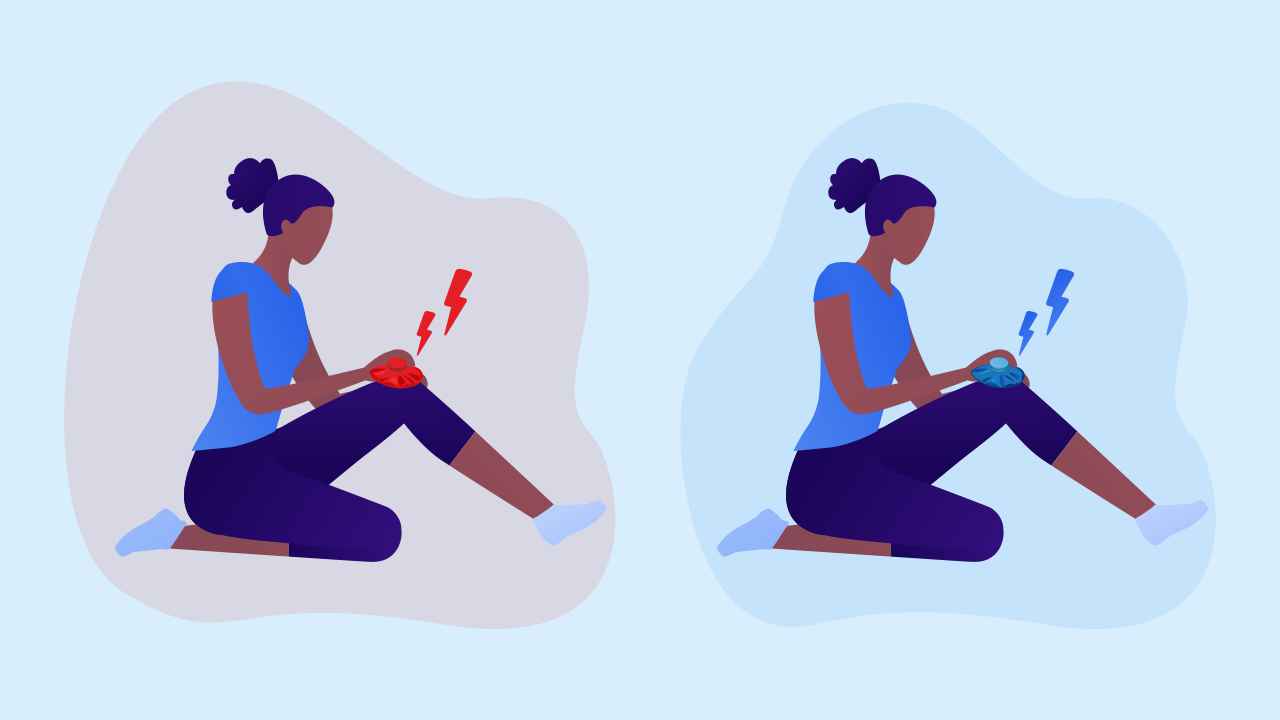
Hot Pack vs Cold Pack: What’s Best for a Running Injury?

Whether you are a beginner, intermediate, or advanced level runner, you would need to rest and recover periodically from training. When we run, our legs have to cope with sustained loads and in the process, microscopic tears are created in the muscles. Besides, carbohydrates — our energy stores in the body — get depleted due to energy expenditure. Hence, it is important to recover after training, so that the muscles have time to repair themselves and the body can replenish energy stores.
It is when we do not incorporate enough recovery that we could get injured over time. These are called chronic injuries, since they happen due to overuse. Acute injuries on the other hand, happen suddenly.
Many injuries can be treated at home using either hot or cold therapy or both. You could speed up recovery if you know when to use hot or cold therapy. Let us discuss these options.
Cold therapy
Cold therapy treatment is used in case of an acute injury. An acute injury is one that has occurred within the last 48 hours. It is usually sudden and could arise from falling or a collision or some form of trauma to the affected part. As a result of such a fall or collision, you could get a sprain (an injury to the ligaments that connect two bones) or a strain (an injury to muscles or tendons, which attach the muscle to bones).
Ice is used to treat acute injuries that result in inflammation and swelling and should be applied within 48 hours of the occurrence of the injury
Cold therapy works by constricting blood vessels and reducing blood supply to the affected area. This brings down swelling and inflammation. It also temporarily numbs the area and reduces nerve activity, resulting in reducing pain.
Use an icepack on the affected part and hold it in place for 10-15 minutes, but never more than 20 minutes at a time. Icepack for swelling prevents the affected area from developing frostbite. If the ice pack is made from a material that freezes, it is important to place a thin cloth to prevent ice burns. You may use this treatment 3-4 times a day.
Cold therapy should not be used in case you have a nerve disorder (like in diabetes), since you would have decreased sensitivity to temperature or on stiff joints and muscles.
Also Read: Diabetes and Its Long-term Complications
Heat therapy
Heat therapy is used in case of chronic injuries, which result in sore or stiff muscles and joints. Chronic injuries are different from acute injuries, in that, they develop slowly over time and due to overuse.
Heat therapy for pain works by increasing blood flow to the area by dilating blood vessels and increasing temperature at the affected area
Increased temperature will help the muscle expand and increase its flexibility. This helps relax and soothe the muscles.
Heat is applied using a heating pad or a hot wet towel. Apply the hot pack for pain relief for 10-15 minutes, and not for more than 20 minutes at a time. It is especially important to check the temperature of the heating pad, since it can be heated to different levels using a switch, so as not to burn yourself. Heat can be applied locally using a heating pad or to the whole body by using a warm water tub or sauna. The latter is used when there is soreness in extended areas of the body.
There is sometimes the question of when to use dry (sauna or heating pad) and wet (steam towel or steam / warm bath) heat. You may note that wet heat penetrates deeper in the muscles and may be beneficial in the case of large muscles such as the back, quads, or hamstrings.
Heat therapy should not be used in case of nerve disorder (like in diabetes), since decreased sensitivity to temperature may result in burns. It is also not advisable if you have a heart condition or high blood pressure.
Also Read: How Can Runners Use Foam Rollers for Recovery?
As a rule of thumb, avoid using heat therapy on recent or acute injuries as they can increase inflammation and delay recovery. Additionally, alternate hot and cold therapy can help improve recovery and range of motion. It is especially beneficial when heat or ice alone has not worked.
Injuries are inevitable in any sport and hold true for running as well. Knowing the nature of an injury can go a long way to heal it. You can then decide on whether to use hot or cold packs and begin the journey to healing.













